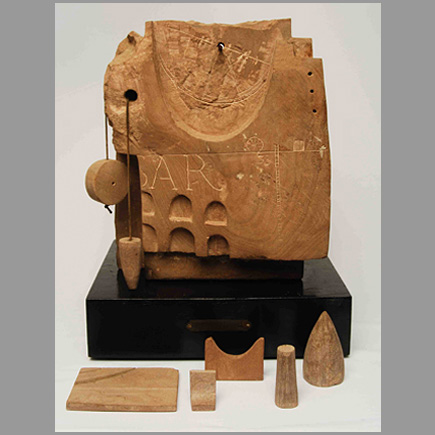Art Works |
Video |
||
 T, 1979-80 Sandstone; 13 x 11 7/8 x 11 inches
T, 1979-80 Sandstone; 13 x 11 7/8 x 11 inches
From Beyond the Erotic: Flows |
No Video Available
Return to: Artist Biographies
|
||
Fonseca's Sculptures Fonseca's sculptures take architectural reference as well as that of ancient ruins and what he studied while taking part in excavations. This causes the viewer to recognize and identify parts of the sculpture, perhaps relating them to the characteristics of a building or home. But the way in which he manifests these pieces still leaves something to be defined by the viewer in relation to time and space. His works do not automatically construct a definite time period in the viewer's mind, leaving it to the imagination as to what it may or may not represent in time and space. La Torre de los Vientos |
|||

